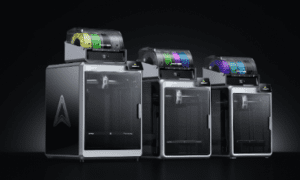The EU is at war against unregulated bitcoin services. With the new MICA licensing regiment, gray zone protocols and providers will no longer have a loophole – unless they operate in a fully decentralized and self-custodial way.
One protocol stands out–in true cypher punk fashion–and resists the EU’s compliance war. Nostr Wallet Connect or ‘NWC’ allows Lightning wallets to connect to any application through a standardized interface.
In the following interview with PIerre Corbin, co-founder and CEO of Flash, we’re divining into the protocol’s features and find out why it could be not just the last hope for decentralized bitcoin e-commerce but also a breakthrough feature for existing bitcoin wallets.
 TechBullion (TB): Pierre, thank you for joining us. Nostr Wallet Connect (NWC) is gaining attention as a new protocol enabling seamless interaction between Bitcoin Lightning wallets and applications. Could you explain what makes NWC stand out?
TechBullion (TB): Pierre, thank you for joining us. Nostr Wallet Connect (NWC) is gaining attention as a new protocol enabling seamless interaction between Bitcoin Lightning wallets and applications. Could you explain what makes NWC stand out?
Pierre Corbin (PC): Absolutely. NWC is a game changer because it acts as a permissionless, decentralized communication protocol between apps and Lightning wallets.
Apps can trigger payments with encryption and user control, without ever holding or managing funds themselves.
With NWC, we can now bring direct debit to bitcoin, meaning recurring payments for subscriptions. Fully automated payments are finally possible on Lightning. This opens up new use cases for programmable, instant Bitcoin payments while preserving full user autonomy.
TB: It sounds like it’s quite different from traditional payment systems. But NWC currently exists in somewhat of a regulatory gray area. How do you see regulators approaching this?
PC: That’s a key challenge. NWC’s architecture isn’t a financial service—it doesn’t custody funds or issue tokens—so it falls outside most existing regulatory categories. Regulators tend to focus on economic function, like custody or transmission of assets. NWC is more like an API or communication relay: decentralized, free, and permissionless. So, while NWC itself might not be directly regulated, applications that integrate NWC could be subject to compliance obligations depending on their business model.
However, NWC is doing regulators a favor too because it removes risks associated with custody.
TB: How do global regulatory frameworks like the EU’s MiCA or the U.S. FinCEN guidance view protocols like NWC?
PC: MiCA, which regulates crypto asset service providers, explicitly exempts non-custodial wallet providers, which fits NWC perfectly because it never holds or controls funds.
FinCEN’s money transmission rules target centralized intermediaries, while NWC operates peer-to-peer without any intermediary controlling transactions.
The global FATF standards also focus on risk-based assessments, so NWC’s decentralized, encrypted relay approach would likely face scrutiny only if it was enabling illicit activity, which is something outside the specification of the protocol.
TB: With increasing regulation around privacy and transparency, does NWC risk being seen as privacy-enhancing technology that could raise concerns?
PC: Some regulators might interpret it that way because NWC abstracts interactions between clients and wallets behind encrypted relays, but NWC itself does not claim a privacy enhancement role. It’s fundamentally about user consent and direct control—it doesn’t add a layer to obfuscate transactions but to enable seamless, secure communication.
TB: What lessons can NWC offer developers building fintech infrastructure in this evolving regulatory landscape?
PC: The biggest lesson is around technological neutrality: Protocols that don’t involve custody or payment intermediation will not be the focus of lawmakers. Developers should design for user sovereignty, transparency, and security to align with regulators’ risk-based approach. NWC demonstrates how you can build scalable, sophisticated Bitcoin payment infrastructure that respects these principles and coexists with regulatory frameworks.
TB: What can businesses and developers expect next for NWC and related protocols?
PC: I expect regulators will continue evolving but likely focus more on integrated applications rather than base protocols. The gray area today means vigilance is needed, but the decentralized architecture of NWC positions it well for regulatory clarity as authorities appreciate innovation that does not compromise control or expose systemic risks.
TB: Pierre, thank you for your insights. Any final thoughts?
PC: NWC is a glimpse into the future of bitcoin payments. It could be scaled up to a global network that handles billions of transactions, through decentralized, user-controlled, and open infrastructure.
I recommend payments executives to stay informed, remain agile, and embrace these innovations. Businesses, that can integrate these new technologies early, are well positioned to reap the benefits.
The intersection of technology and regulation is the firing line between consumer-choice one the one side and old-school financial services on the other. Protocols like NWC offer an exciting path forward, ensuring that risks are fully contained, and user control and privacy is maintained without compromising the experience.

































